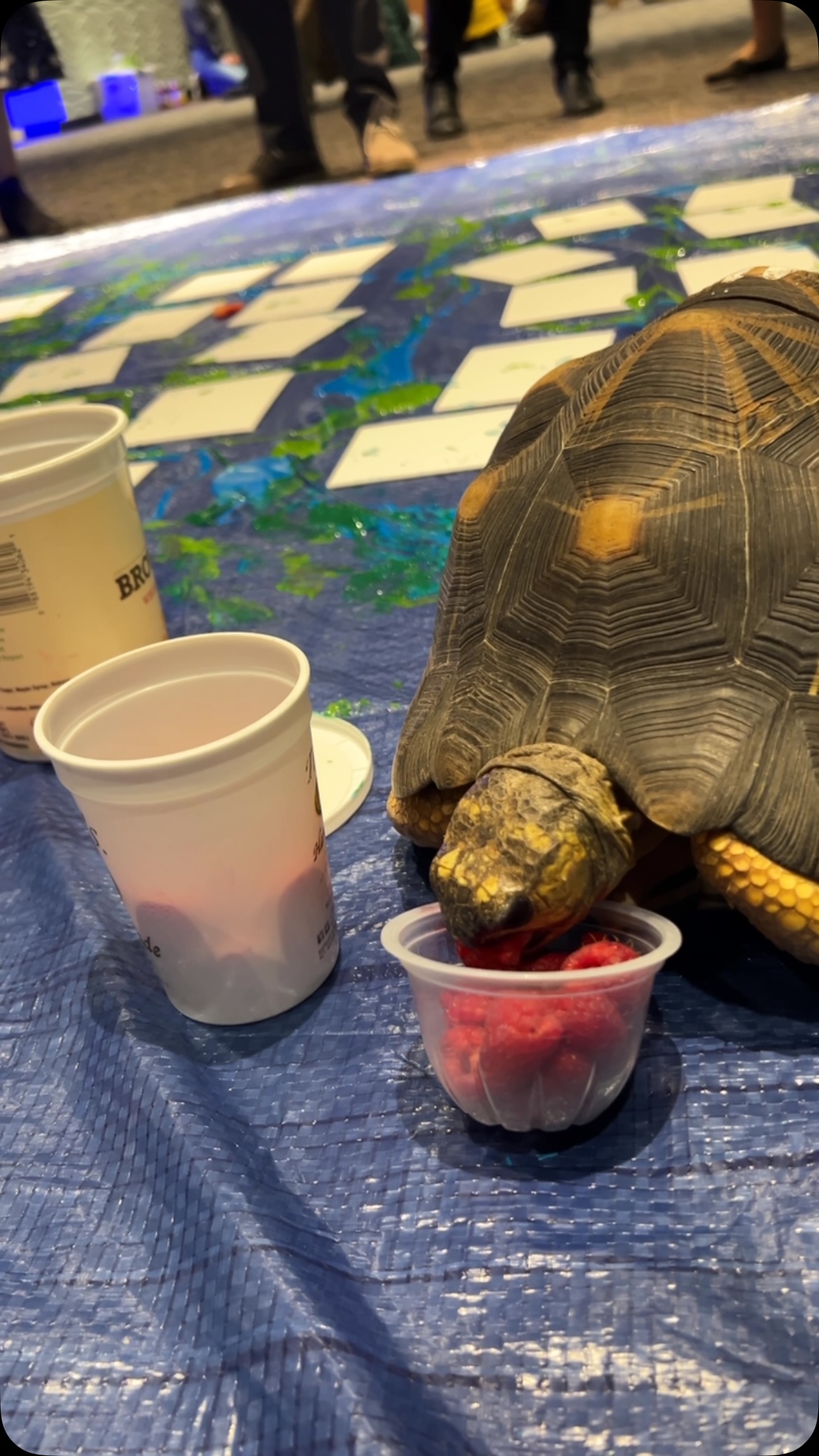- The significance of environmental enrichment and diet in overcoming creative block for animals.
- The visual perception of tortoises, focusing on their ability to see different colors with an emphasis on red.
- Roles of zoo management and animal care teams in enhancing the well-being of tortoises.
- Wildlife conservation efforts focusing on the radiated tortoise and its habitat.
- The impact of diet and natural behaviors on creativity and problem-solving skills in animals.
Creative block is a challenge often experienced by humans and animals alike. While people might reach for a snack to stimulate creativity, animals inherently rely on environmental cues and diet to engage their cognitive functions. In managed care settings, animal enriched activities and diets play a crucial role in stimulating natural behaviors, which in turn can enhance their creative problem-solving capabilities. In tortoises, especially the radiated tortoise, diet and visual perception play integral roles in their ability to interact with their surroundings and engage in behaviors akin to creativity.
The radiated tortoise, native to the arid regions of Madagascar, is an intriguing species both as a visual marvel and a subject of conservation efforts. One fascinating aspect of these tortoises is their visual perception. Research and observations by zoo animal care teams reveal that these tortoises can perceive a wide range of colors, with red being particularly vivid to them. This can be advantageous when foraging for food like berries, which are often brightly colored, facilitating easier access to nutrition which stimulates their natural behaviors.
In zoological settings, the goal is to mimic the natural habitats of these tortoises as closely as possible to promote their well-being. Animal care teams meticulously design enrichment activities that not only provide physical stimulation but also mental engagement. Offering brightly colored fruits and vegetables, especially reds, appeals to the visual senses of radiated tortoises. This practice encourages natural foraging behaviors, ensuring that the tortoises remain mentally and physically active.
Zoo management plays a critical role in the successful integration of these enrichment practices. Teams must understand the dietary preferences and natural instincts of tortoises to curate effective enrichment programs. They incorporate a variety of stimuli, including tactile, visual, and olfactory elements, enabling tortoises to engage with their surroundings actively. Such enrichments prevent behavioral issues that may arise from captivity, such as apathy or frustration, which can be likened to creative block in humans.
Wildlife conservation efforts for radiated tortoises are vital not only for the survival of the species but also for maintaining biodiversity. Due to habitat destruction and poaching, radiated tortoise populations have seen a decline, and conservationists work tirelessly to protect these animals in the wild and in captivity. Conservation strategies involve habitat restoration, legal protection, and breeding programs to enhance population numbers. Awareness of the specific needs of these tortoises, such as their attraction to red, helps conservationists design more effective programs that cater to their natural behaviors.
The importance of diet in overcoming creative and problem-solving blocks in animals is a subject of research and debate. Providing balanced nutrition rich in necessary nutrients is essential for maintaining cognitive functions in animals. For tortoises, a diet comprising brightly colored fruits and vegetables not only meets nutritional needs but also engages their senses and promotes natural behaviors. Such dietary preferences offer insights into the possibility that certain foods may affect cognitive functioning, a concept familiar to humans seeking snacks to spur creativity.
In conclusion, understanding the behavioral and dietary needs of animals such as the radiated tortoise can inspire more effective zoo and conservation management strategies. Emphasizing enrichment and nutritional variety based on visual perception enhances both the quality of life of tortoises in captivity and their ability to exhibit natural behaviors. Conservation efforts must marry scientific research with practical application to ensure the survival and thriving of these species in both natural and managed environments. Promoting enrichment and understanding animal behavior opens avenues for better care strategies that benefit not only tortoises but the broader ecosystem in which they play an essential role.
*****
Source Description
When you’ve got creative block and need a little snack to get the juices flowing 🎨🐢
Radiated tortoises like 11 can see a range of colors, but our Animal Care Team has noticed that red seems to be the most vibrant to them! Pretty convenient for finding berries…


